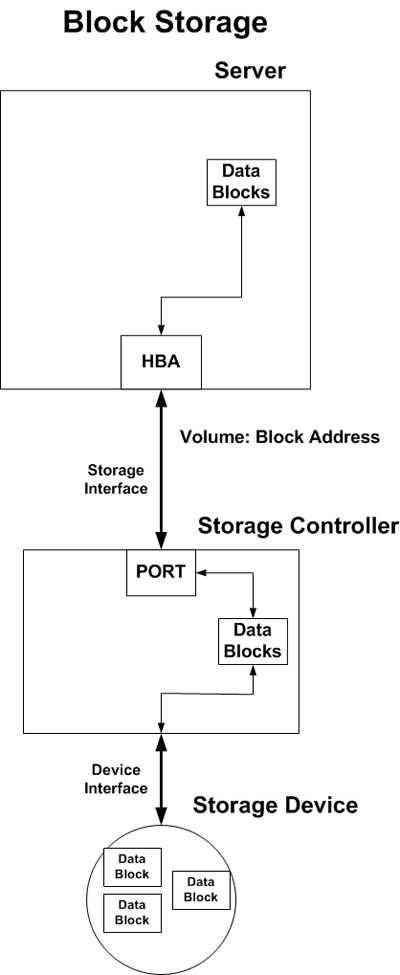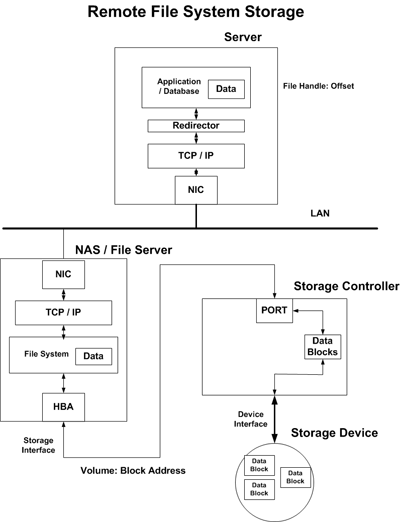Question: SAN vs NAS - What Is the Difference?
Both Storage Area Networks (SANs) and Network Attached Storage (NAS)provide networked storage solutions.
Answer:
A NAS is a single storage device that operate on data files, while a SAN is a local network of multiple devices that operate on disk blocks.
SAN vs NAS Technology
A SAN commonly utilizes Fibre Channel interconnects. A NAS typically makes Ethernet and TCP/IP connections.SAN vs NAS Usage Model
The administrator of a home or small business network can connect one NAS device to their LAN. The NAS maintains its ownIP address comparable to computer and other TCP/IP devices. Using a software program that normally is provided together with the NAS hardware, a network administrator can set up automatic or manual backups and file copies between the NAS and all other connected devices. The NAS holds many gigabytes of data, up to a few terabytes. Administrators add more storage capacity to their network by installing additional NAS devices, although each NAS operates independently.Administrators of larger enterprise networks may require many terabytes of centralized file storage or very high-speed file transfer operations. Where installing an army of many NAS devices is not a practical option, administrators can instead install a single SAN containing a high-performance disk array to provide the needed scalability and performance. Administrators require specialized knowledge and training to configure and maintain SANs.
SAN / NAS Convergence
As Internet technologies like TCP/IP and Ethernet have proliferated worldwide, some SAN products are making the transition from Fibre Channel to the same IP-based approach NAS uses. Also, with the rapid improvements in disk storage technology, today's NAS devices now offer capacities and performance that once were only possible with SAN. These two industry factors have led to a partial convergence of NAS and SAN approaches to network storage.
Basically, a SAN does block I/O just like having a disk directly attached to a server. A NAS is really remote file system I/O where the file request is redirected over a network to a device (really a processing entity with its own file system) where the file I/O is actually performed. Here are two pictures that give you a general idea of how the I/O is done between block (SAN) and remote file I/O (NAS):


Deciding whether to use a SAN vs. NAS has many factors to consider so there's not a specific answer. In general if your application requires block I/O or there is a significant performance requirement, use a SAN. If it's file based I/O for the application or you need to share files and you want simple administration, use NAS.





















 1381
1381











 被折叠的 条评论
为什么被折叠?
被折叠的 条评论
为什么被折叠?








